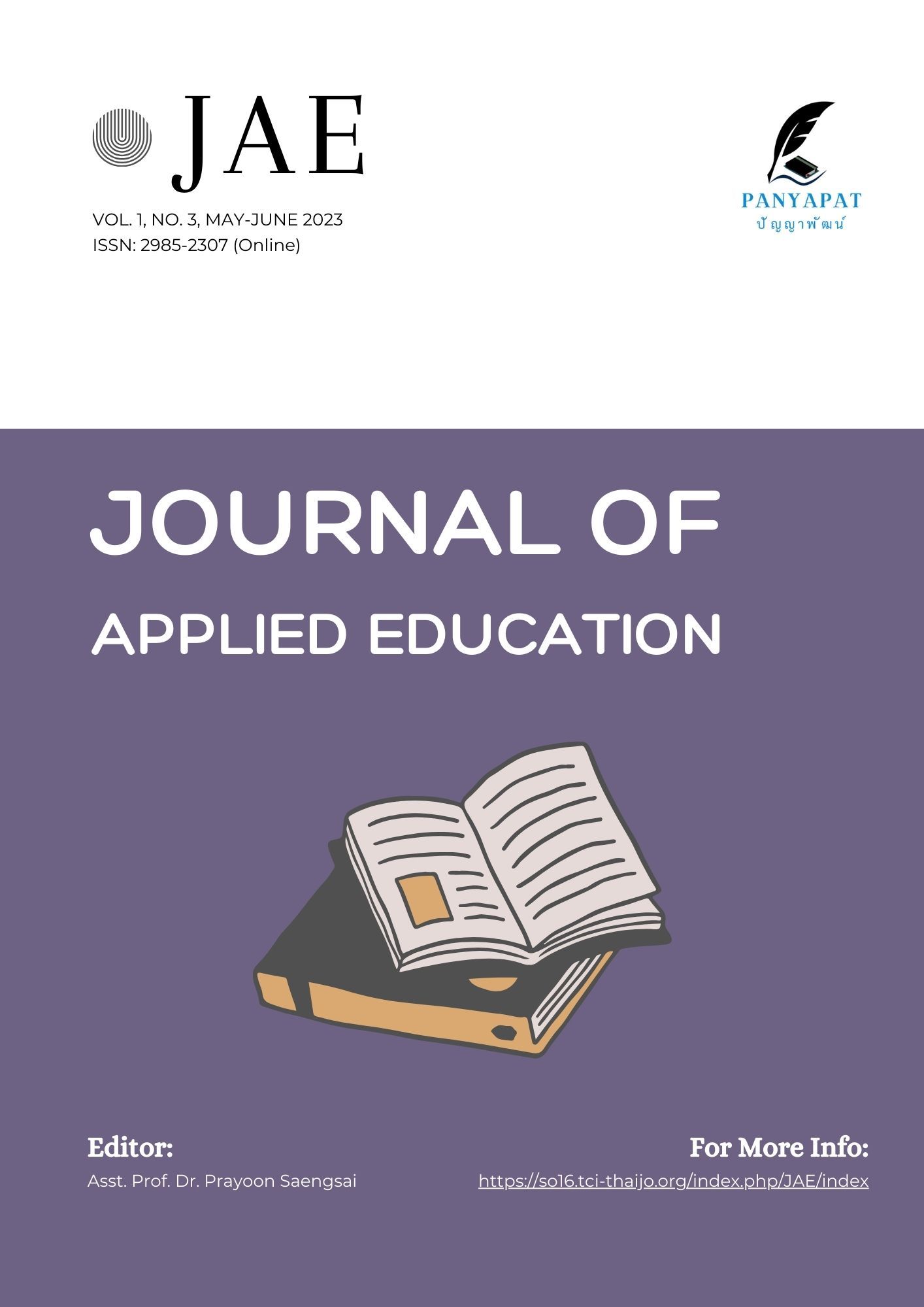Learning Management in The Form of Audiovisual Media: The Future of Thai Education
Main Article Content
Abstract
This article aims to present the learning management of audiovisual media: the future of Thai education. The study found that audiovisual equipment plays an important role in the future development of Thai education, both in supporting basic educational activities such as presenting information doing question and answer activities within the classroom and have the opportunity to develop into support in the field of academic performance testing. Moreover, audiovisual aids are an important part of today's education because they help students learn better. That is one reason why the use of audiovisual aids in teaching, learning, and research has increased. Over the years, the speed at which students can instantly access information and share it with others has greatly improved. Moreover, now students can understand concepts and ideas better and faster.
Article Details

This work is licensed under a Creative Commons Attribution-NonCommercial-NoDerivatives 4.0 International License.
References
เสวนีย์ สิกขาบัณฑิต. (2528). เทคโนโลยีทางการศึกษา. กรุงเทพฯ: สถาบันเทคโนโลยีพระจอมเกล้า พระนครเหนือ.
กิดานันท์ มลิทอง. (2540). เทคโนโลยีการศึกษาและนวัตนกรรม. กรุงเทพฯ: ชวนพิมพ์.
ช่อบุญ จิรานุภาพ. (2542). การพัฒนาบทเรียนคอมพิวเตอร์มัลติมีเดีย เรื่อง การใช้บริการสารสนเทศห้องสมุดสำหรับนิสิตปริญญาตรีชั้นปีที่ 1. (การศึกษามหาบัณฑิต, มหาวิทยาลัยศรีนครินทรวิโรฒ).
ชัยวัฒน์ สุทธิรัตน์. (2561). 80 นวัตกรรมการจัดการเรียนรู้ที่เน้นผู้เรียนเป็นสำคัญ. (พิมพ์ครั้งที่ 8). นนทบุรี: พี บาลานซ์ดีไซด์แอนปริ้นติ้ง.
ธัชพนธ์ สรภูมิ และ กฤตย์ษุพัช สารนอก. (2565). บทเรียนออนไลน์ เรื่องการประยุกต์ใช้เทคโนโลยีสื่อโสตทัศนูปกรณ์และส่งเสริมการเรียนรู้การจัดการเรียนการสอนในยุคฐานวิถีชีวิตใหม่ สําหรับผู้ใช้ในระดับอุดมศึกษา. วารสารศึกษาศาสตร์ มหาวิทยาลัยศิลปากร, 20(1), 341-356.
บุปผชาติ ทัฬหิกรณ์. (2538). มัลติมีเดียปฏิสัมพันธ์. วารสาร สสวท., 23(3), 25–35.
พัลลภ พิริยะสุรวงศ์. (2541). มัลติมีเดียเพื่อการเรียนการสอน. วารสารพัฒนาเทคนิคศึกษา, 11(4), 9–15.
มหาวิทยาลัยราชภัฏวไลยอลงกรณ์ ในพระบรมราชูปถัมภ์. (2553). คู่มือการจัดระบบการเรียนการสอนที่ยึดผู้เรียนเป็นศูนย์กลางการเรียนรู้. กรุงเทพฯ: โรงพิมพ์เทียนวัฒนา พริ้นท์ติ้ง.
วิชัย ประสิทธิ์วุฒิเวชช์. (2542). การพัฒนาหลักสูตรสานต่อที่ท้องถิ่น. กรุงเทพฯ: เลิฟแอนด์ลิพ เพรส.
สุมน อมรวิวัฒน์. (2533). สมบัติทิพย์ของการศึกษาไทย. กรุงเทพฯ: จุฬาลงกรณ์มหาวิทยาลัย.
สุวดี อุปปินใจ และ พูนชัย ยาวิราช. (2562). การจัดการชั้นเรียนยุคดิจิทัล. วารสารสมาคมพัฒนาวิชาชีพการบริหารการศึกษาแห่งประเทศไทย, 1(4), 51-65.
อิทธิเดช น้อยไม้. (2560). หลักสูตรและการจัดการเรียนรู้สังคมศึกษา. กรุงเทพฯ: บริษัท โอ.เอส.พริ้นติ้ง เฮ้าส์.
AVL Design Community. (2564). โสตทัศนูปกรณ์ สำคัญอย่างไรต่ออนาคตการศึกษาไทย. สืบค้น 5 มีนาคม 2566. จาก https://avl.co.th/blogs/how-important-is-audio-visual-equipment-for-thai-education/.
Carter V. Good. (1975). Dictionary of Education. New York: McGraw-Hill.
Hills, P.J. (1982). A Dictionary of Education. London: Routledge & Kegan Payi.
Hough, J. B., & Duncan, J. K. (1970). Teaching: Description and analysis. United States: Addison-Westley.
Nuankaew, W., & Nuankaew, P. (2021). Educational Engineering for Models of Academic Success in Thai Universities During the COVID-19 Pandemic: Learning Strategies for Lifelong Learning. International Journal of Engineering Pedagogy, 11(4), 96-114.
Qnextech. (2566). โสตทัศนูปกรณ์สามารถนำมาใช้ในกระบวนการเรียนการสอนได้อย่างไร?. สืบค้น 5 มีนาคม 2566. จาก https://qnextech.com/th/blog/how_audio_visual_can_be_used_in_teaching_and_learning_process/.

